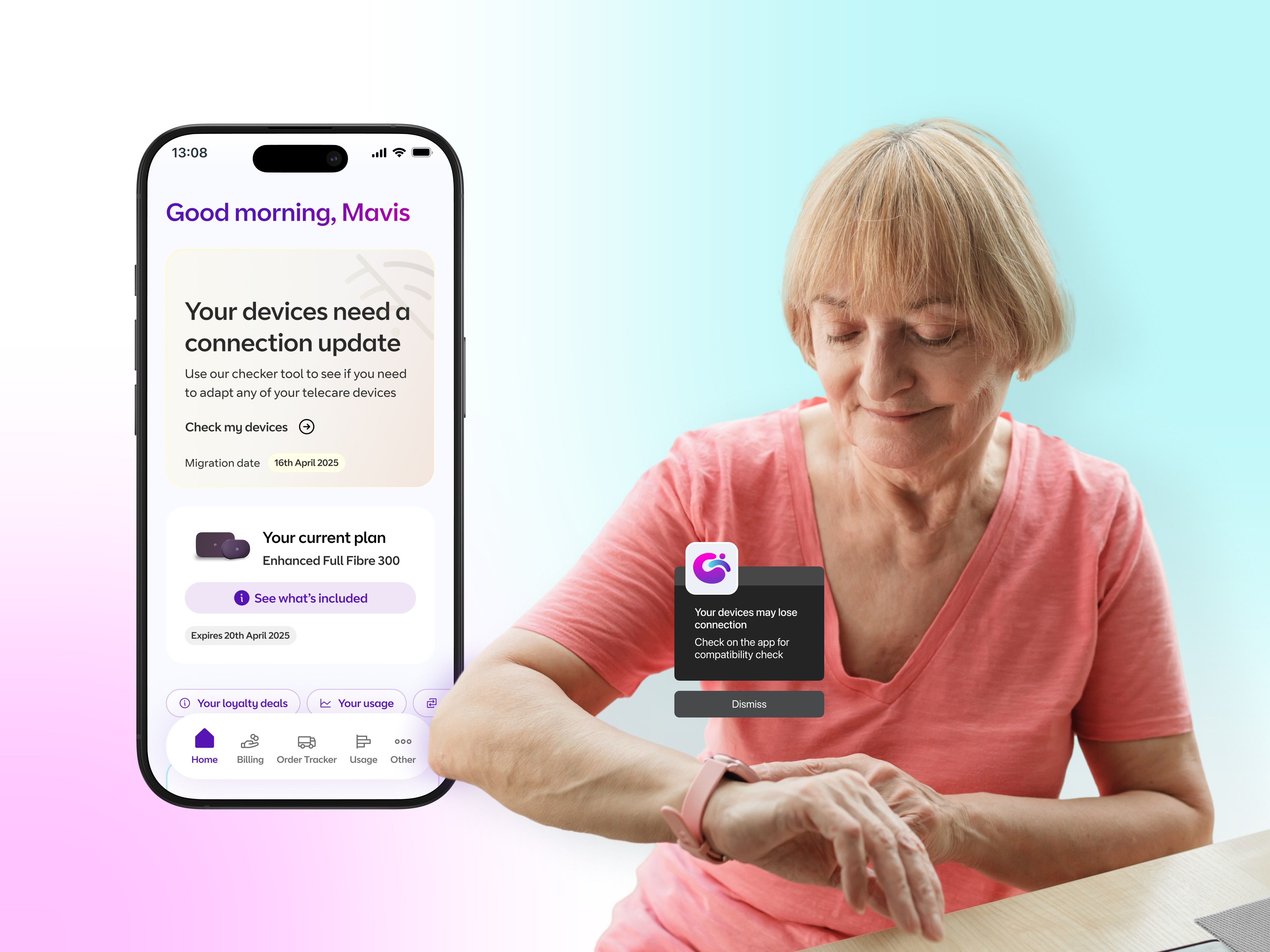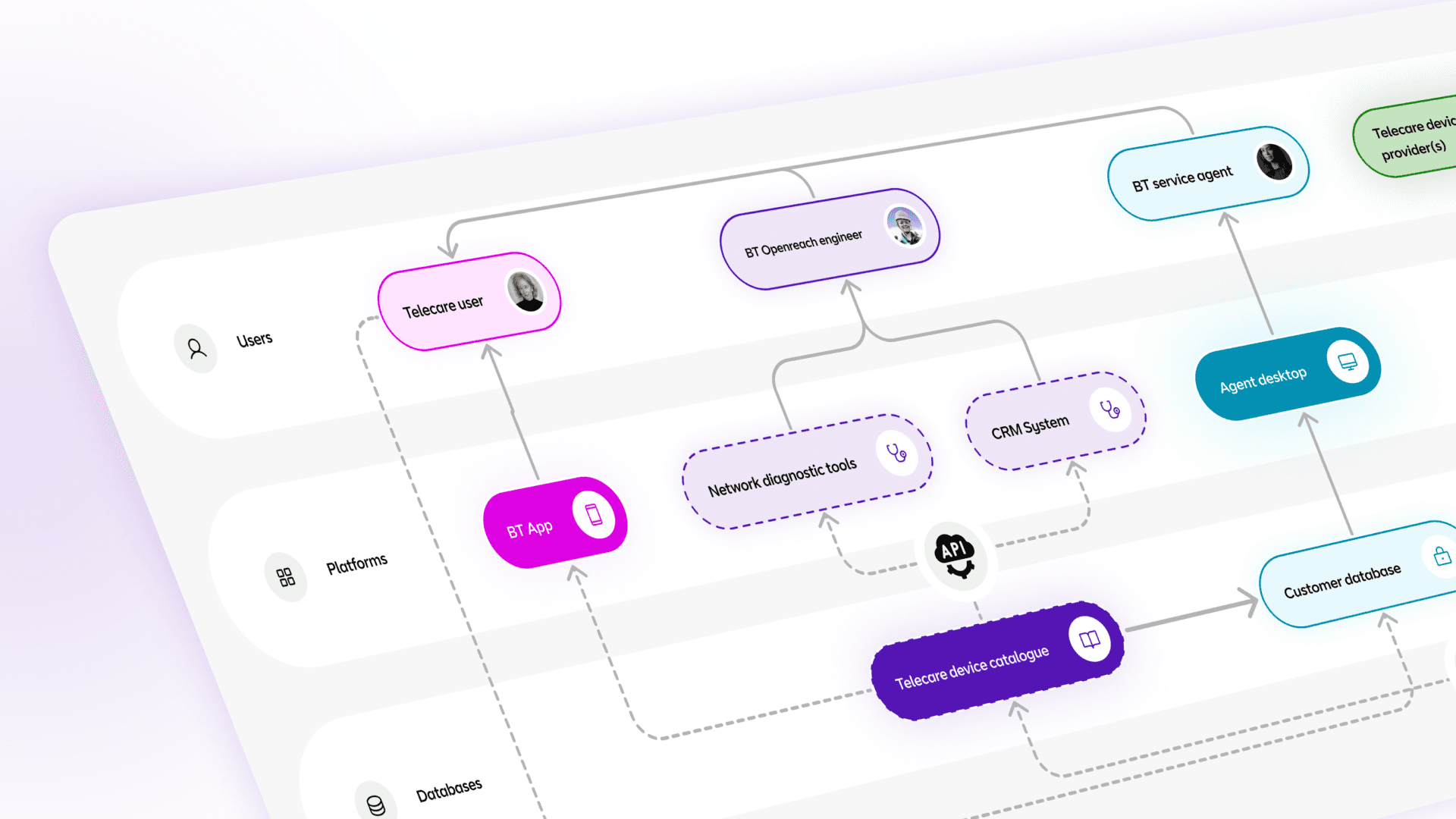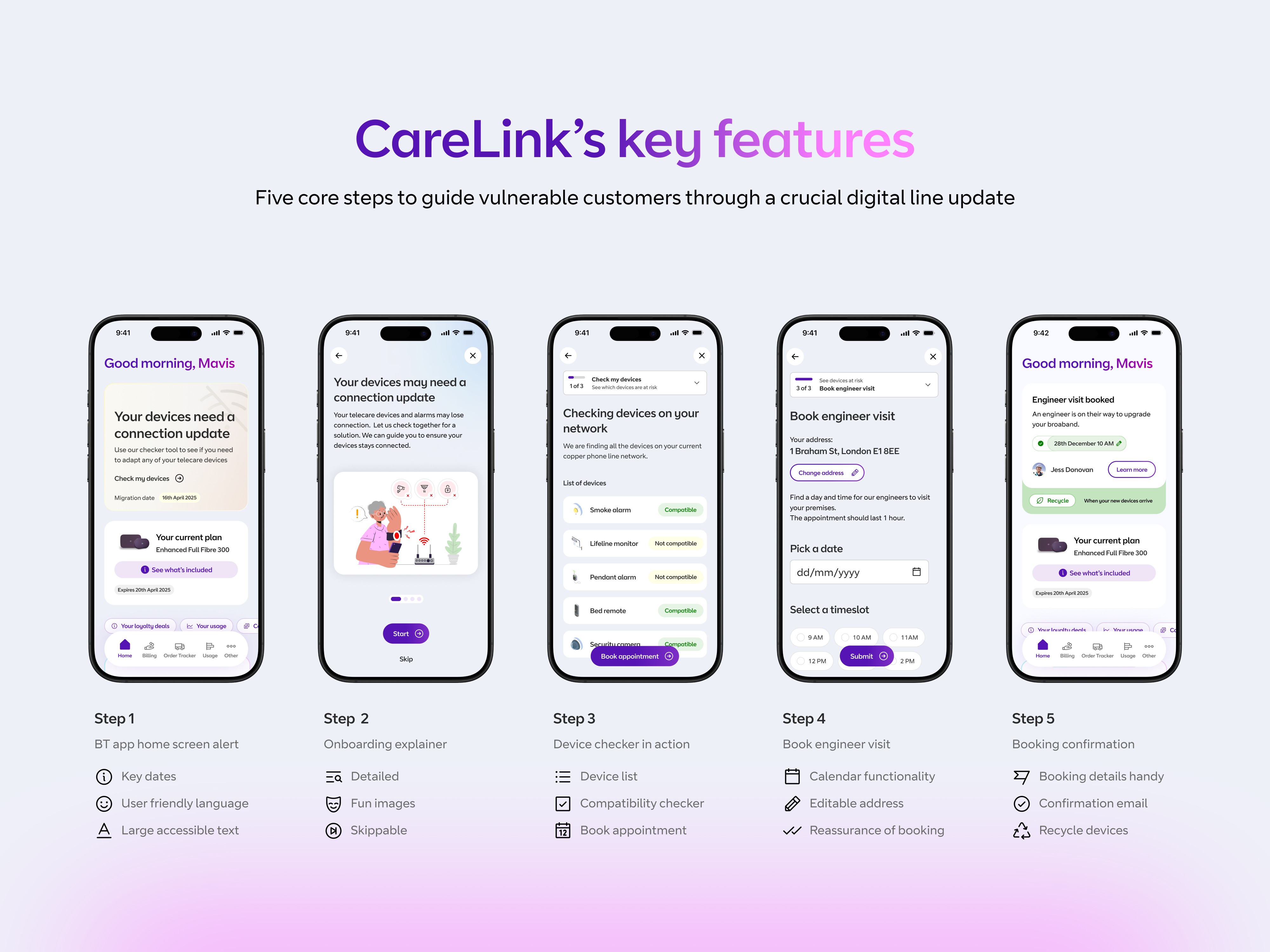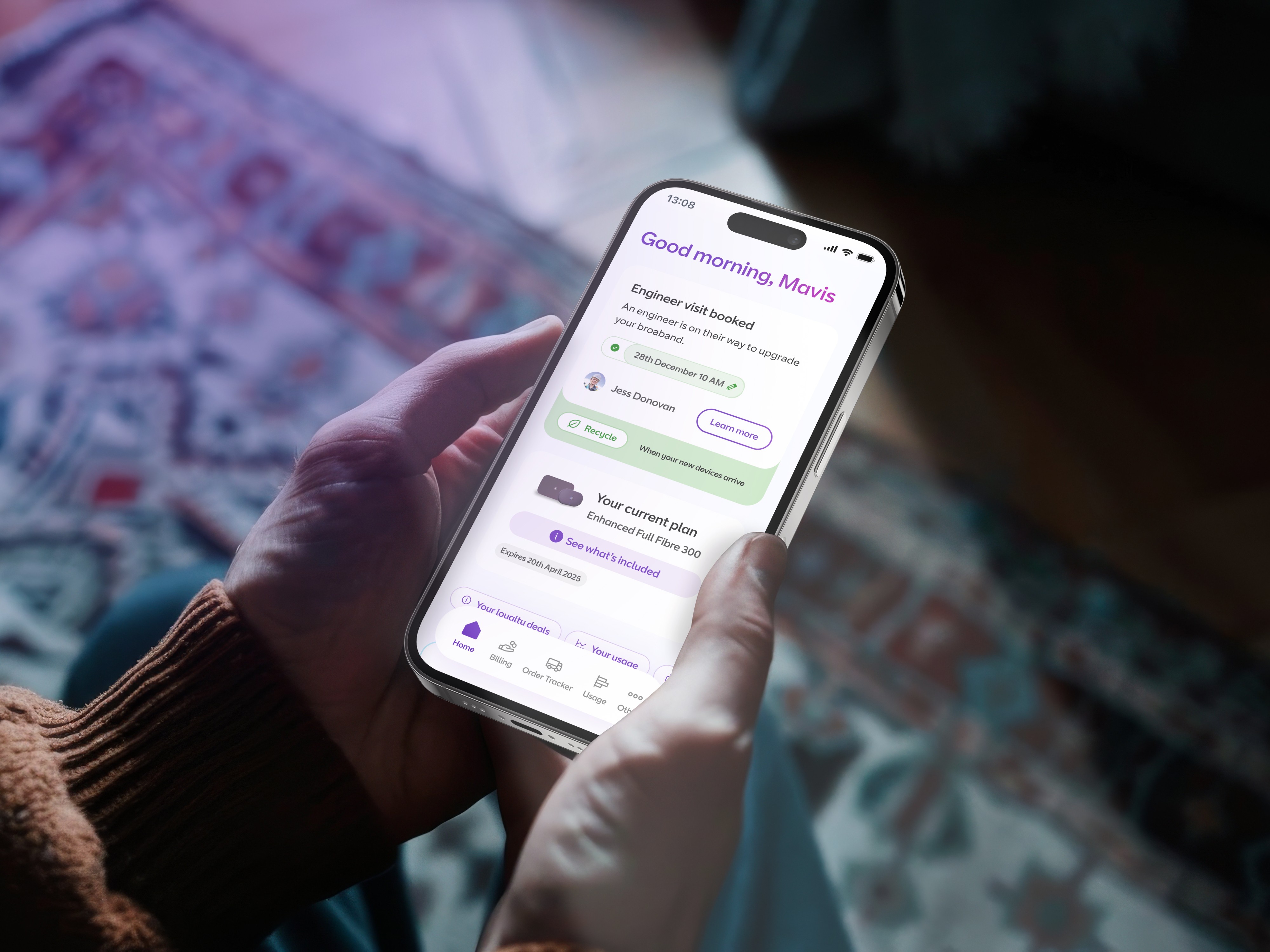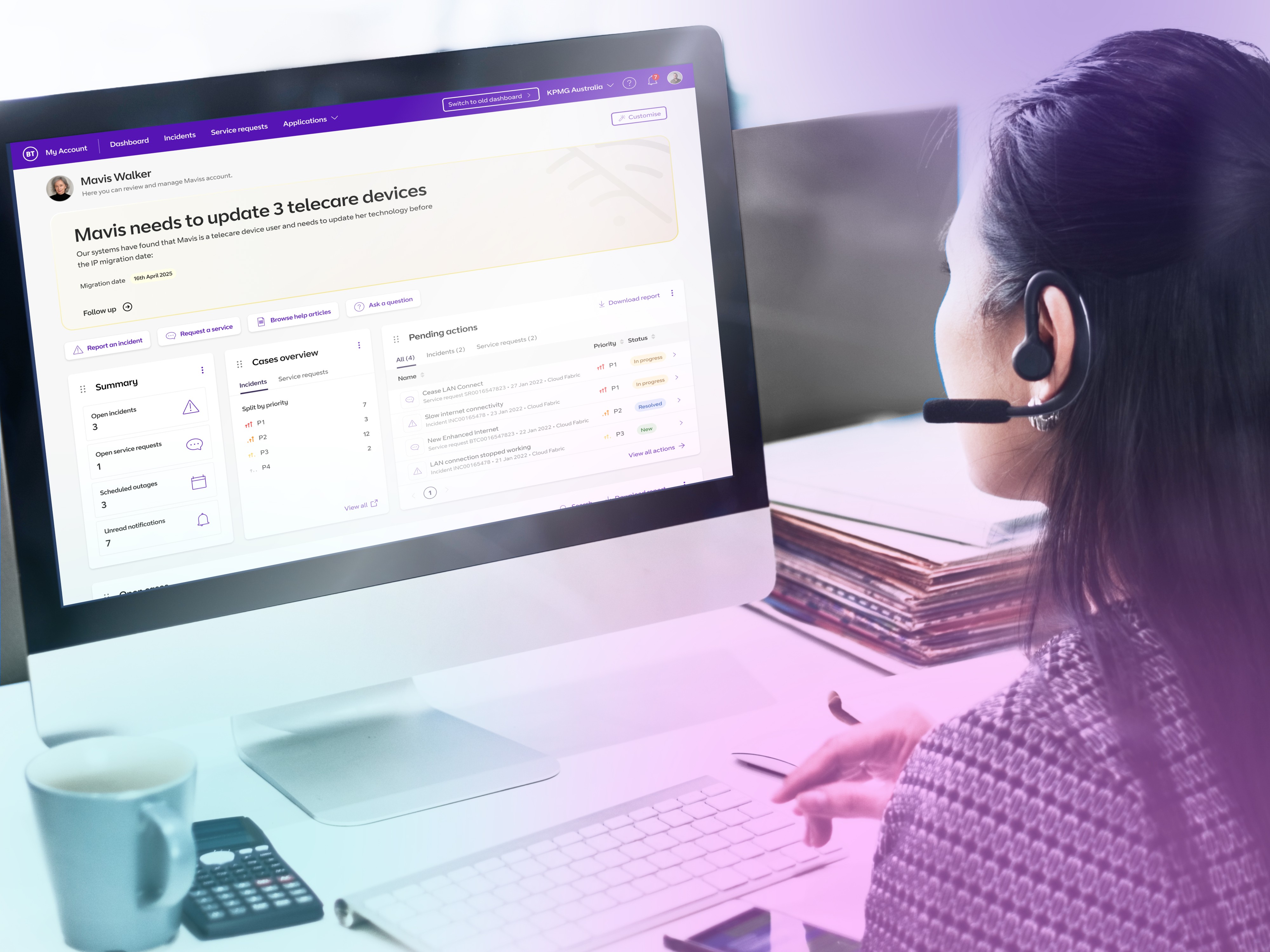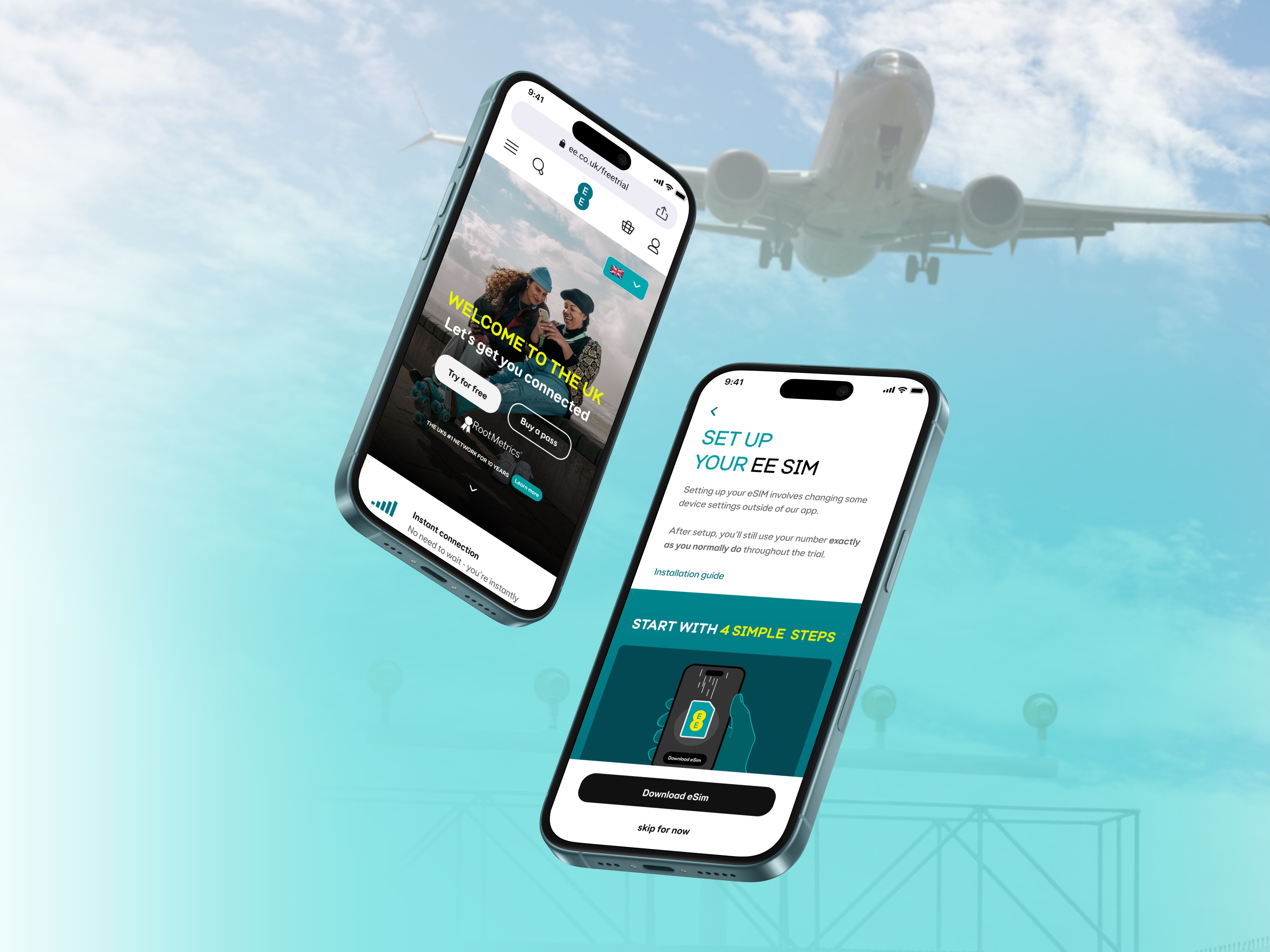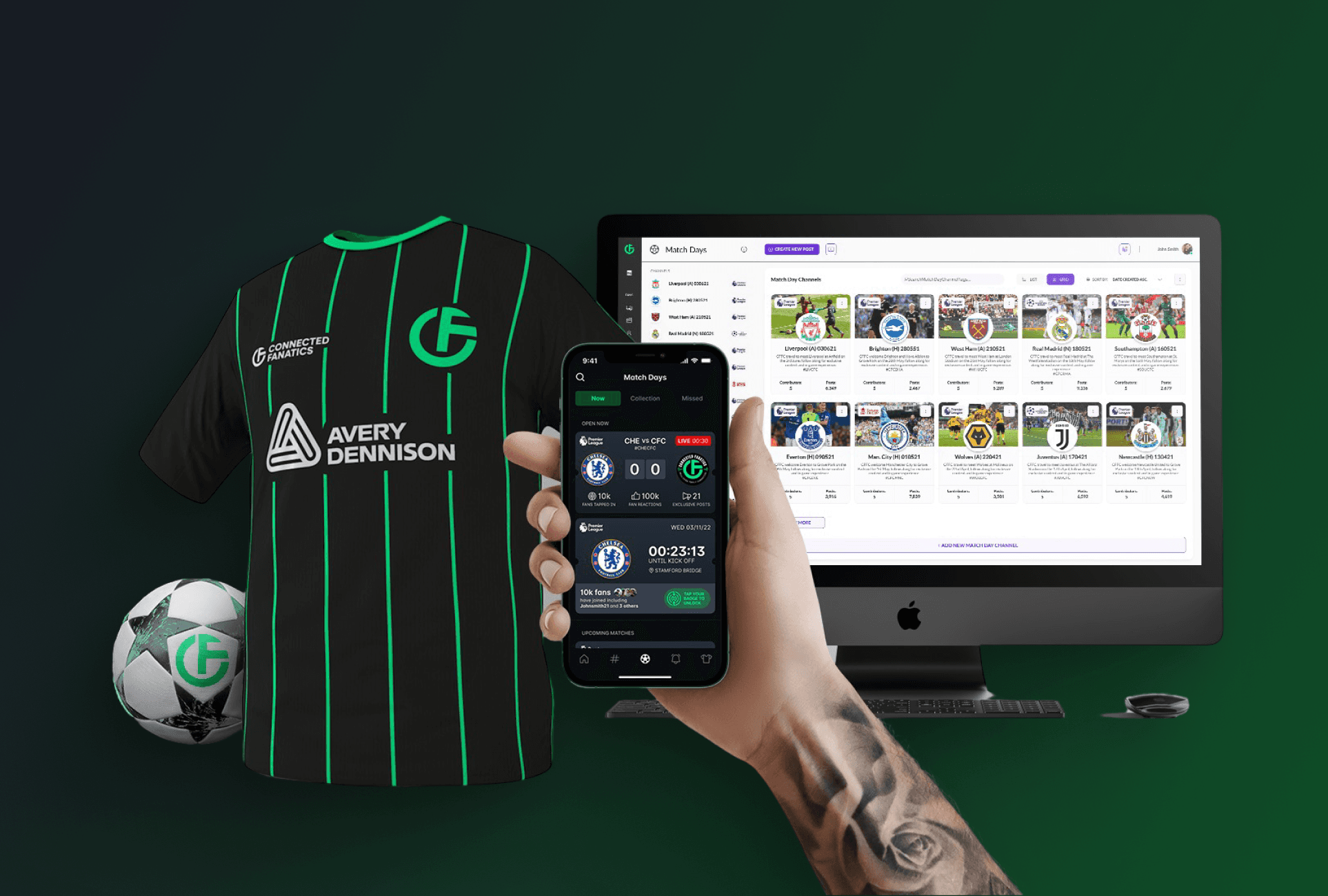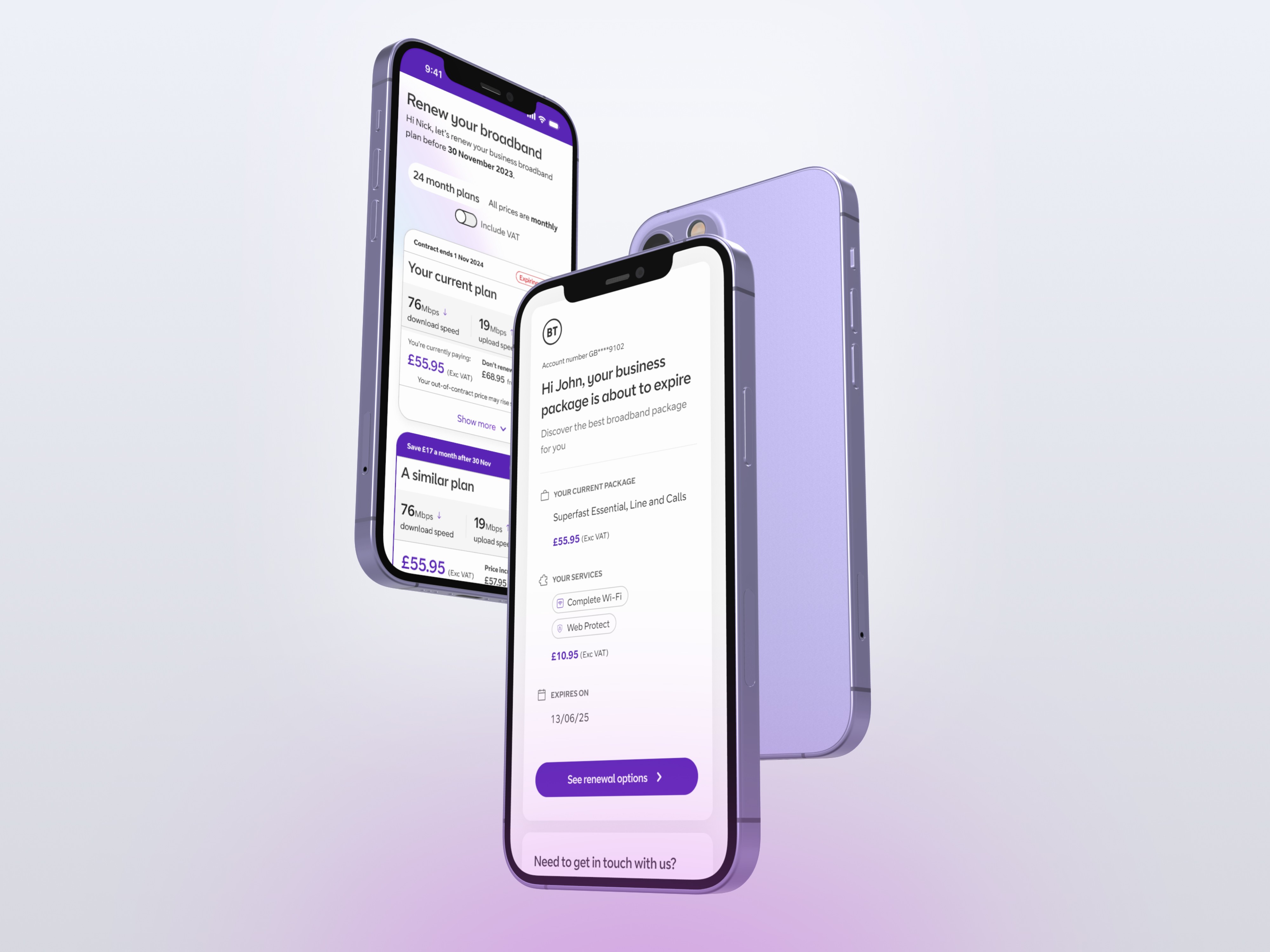CareLink
A seamless digital upgrade experience for vulnerable telecare users
Product Design
Service Design
Concept Design
Nov 18, 2024

OVERVIEW
The public switched telephone network (PSTN)
The challenge
As a design leader at BT Group, I led a design team to work towards solving a time sensitive connectivity issues of informing vulnerable telecare customers about the transformation of the UK’s outdated public switched telephone network (PSTN) into a fully digital, IP-based system by 2025.
This wasn’t just a technical upgrade—it was a human-centered design challenge, requiring thoughtful decisions to address user needs, navigate complex team dynamics, and adapt to unexpected roadblocks like legacy dependencies and resistance to change.
In this case study, I’ll share how design thinking and collaboration shaped my approach to delivering this critical digital upgrade system.
How I tackled this challenge
Realising safety & awareness during the transition was the key to the migration to digital internet lines
The digital upgrade introduced significant risks for vulnerable customers, including the elderly and disabled, who rely on analog lines for critical telecare services like pendant alarms and lifeline monitors. Recognising the potential impact on their safety, I focused on designing solutions to ensure uninterrupted connections during the UK-wide transition.
To understand the full scope, I spoke directly to telecare users and engaged with insurance companies like Aviva and AIG to learn what steps they were taking for the migration. To my surprise, many were doing very little or had little knowledge about the risks. This realisation gave me a deep sense of responsibility to ensure these customers wouldn’t lose access to life-saving services, as the threat of losing connectivity could have life-threatening consequences.
Design approach
When tackling the challenge of ensuring seamless connectivity for telecare users, I knew it was crucial to collaborate closely with both technical and business stakeholders.
CareLink’s UX was developed alongside technical architects to demonstrate the feasibility of integrating new APIs with BT Openreach’s network. This collaboration helped build a catalog of compatible telecare devices within BT Business’s backend system, ensuring secure buy-in from key stakeholders.
One key decision I made was focusing on CareLink’s API innovation, allowing telecare customers to easily check if they required an engineer visit to secure their connectivity. The simplicity of this approach not only met user needs but also streamlined the process for both users and support teams.
This diagram outlines how the new APIs would be developed, ensuring that the telecare device checker could function smoothly, which was crucial for maintaining uninterrupted service during the UK-wide network upgrade.
SOLUTION
A telecare upgrade experience that supports the vulnerable, their families and aids agent support.
A user-friendly in-app experience was designed to support vulnerable broadband customers through a critical digital line upgrade. The solution includes:
Home Screen Alert - A prominent widget informs users about the migration and its implications.
Onboarding Explainer - A clear guide walks users through the upgrade process.
Device Checker - API-powered checks ensure device compatibility.
Engineer Booking - Non-compatible devices trigger an option to schedule an engineer visit.
Confirmation - Engineer appointments are confirmed, with follow-up steps like recycling old devices introduced.
This streamlined approach ensures a seamless and supportive user experience.
Tim Carter, BT Design Lead
RESULT
Will be impacted by this positive UX change
Visitors every month
